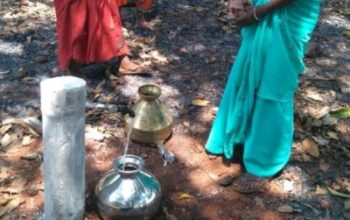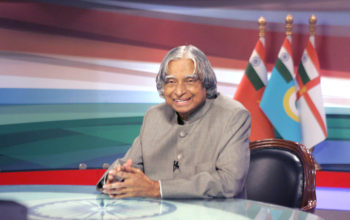Its one of the most common names in India. Sai.. Small and sounds strong. Go on and read, you need not be a devotee of any of the ‘Sai’ , neither you need to believe in them. Just like me. Some numbers as well, which we are more interest in !
Rarely in recent memory has the passing away of a seer attracted such wide attention or evoked so much outpouring of grief as the death of Sathya Sai Baba of Puttaparthi. It was eloquent testimony to the large following he commanded among the high and mighty and among commoners, although profundity was not the strength of his preaching.
For nearly one month, the eyes of millions of the 85-year-old’s devotees were riveted on Puttaparthi, a small though modern town tucked away in a corner of the backward Anantapur district of Andhra Pradesh where he lay critically ill. He was battling heart complications which a pacemaker failed to stabilise, and kidney and liver infections made his condition irretrievable.
Some people are genuinely interested, some are interested in the news, some are ‘worried’ what would happen to all that treasure of His !
An estimated five lakh devotees filed past Sai Baba’s body placed in the ornately decorated Sai Kulwanth Hall in Prashanthi Nilayam, where the godman celebrated his birthdays on a grand scale with either the President or the Prime Minister in attendance. He was interred three days later at the same place from where he addressed the devout sitting on a throne-like chair, later substituted with an electric wheelchair. Quite unusually, state honours were accorded for the funeral, and the Andhra Pradesh government declared a state mourning.
It is a measure of Sai Baba’s appeal that no one complained about the secular state overstepping its limits in honoring him.
It was a measure of Sai Baba’s appeal, transcending religious, linguistic and national boundaries, that no one complained about the secular state overstepping its limits. His philanthropic work and his motivation of the rich to give and share, which drew admiration even from those who did not subscribe to his philosophy, may have muted the sceptics’ criticism.
Very less that India produces good people who can do selfless service to others and the society (with their own flaws and desires, I honestly don’t mind them , because if I ever want to do some selfless service, I would be ineligible otherwise. So are most of us ! ) that I see it as a loss too ! In the name of religion and god and miracles, people do/can do lot of things. There is nothing wrong in my opinion if you can use for good use (however late it was realized). At least, the devotees have discipline ! I saw that almost all the devotees of Sai Baba are completely selfless, highly kind and caring … May be we should come out of shelves. NOT THEM …
enerous donations from his overseas and Indian followers mattered. A foreign devotee, for instance, donated a whopping Rs.650 crore, which helped the Central Trust in establishing super speciality hospitals at Puttaparthi and at Whitefield near Bangalore, together costing Rs.195 crore, and in setting up educational institutions.
As a native of Rayalaseema, the driest region of Andhra Pradesh, Sai Baba desired that it must be transformed. Anantapur, in particular, receives the second lowest rainfall in the country after Jaisalmer in Rajasthan. Three rivers – Pennar, Hagari and Chitravati – flow through the district but remain dry during the summer months.
Sai Baba announced in 1994 that the Trust would fund a project for the supply of drinking water to approximately 800 villages in Anantapur district, many of which had groundwater with high fluoride content, causing physical deformities among people living there. Prime Minister P.V. Narasimha Rao, himself a staunch devotee of Sai Baba, inaugurated the Rs.300 crore project on November 18, 1995. About 300 villages in the drought-prone and fluoride-affected Medak and Mahabubnagar districts and the tribal areas of East and West Godavari were assisted similarly.
Seven years later, in January 2002, Sai Baba announced that the Trust would execute at its expense another ambitious project – the renovation of the dilapidated Kandaleru-Poondi canal and increasing the capacity of the Kandaleru reservoir from 16 to 68 tmcft. This would ensure adequate water supply to Chennai and help irrigate three lakh acres (one acre is 0.4 hectare) of land in Nellore and Chittoor districts of Andhra Pradesh.
Sixty-five kilometres of the 150-km Kandaleru-Poondi canal were lined and three escape structures built for diversion of water in case of flooding. Four days after the gates of the Kandaleru reservoir were opened on November 23, 2004, Sai Baba’s 79th birthday, the Poondi reservoir began filling up, heralding another significant milestone for the Trust.
Sai Baba built hospitals offering quality health care that could easily become a benchmark for corporate hospitals, besides providing mobile medical services at the doorstep of villagers and slum-dwellers. The Rs.300-crore super speciality teaching hospital at Puttaparthi and the 330-bed hospital at Whitefield offer specialised services, including complex heart surgery, free of cost. The demand for these services is such that patients have to wait for their turn for months before they are admitted for surgery. His focus on education was no less significant, and was reported to reflect the wishes of his mother, Eswaramma. He developed a chain of institutions, comparable with the best in their class. The Sathya Sai Deemed University is probably the only institution that offers courses in cutting-edge disciplines without tuition and other fees. Lately, a new scheme called Vidya Vahini was launched. It involved the “adoption” of schools in rural areas to turn them around and make them on a par with those operated directly by the Trust.
None of us might / can do this kind of work alone or otherwise in our combined lifetimes !
Rethink…
WorthvieW
Related Posts












good one sethu.. read and clicked on ads 😉